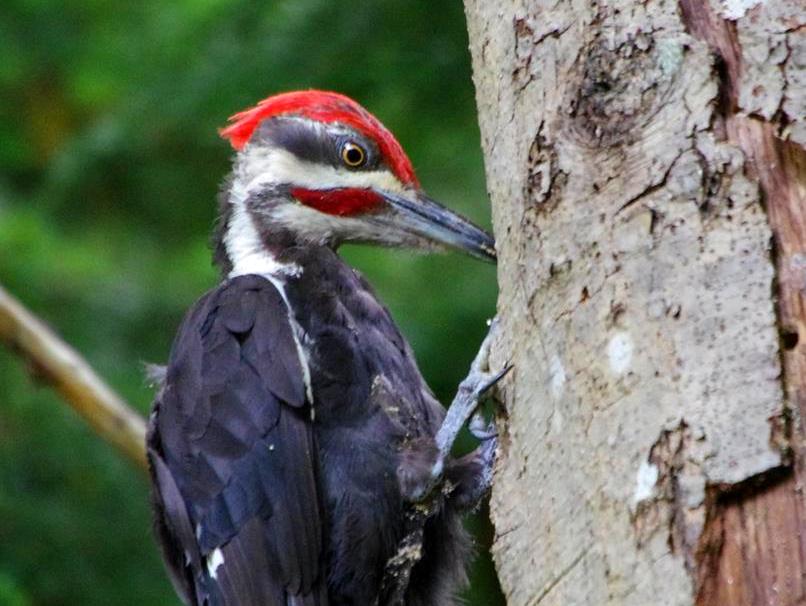Great Horned Owl (Bubo Virginianus)
Great Horned Owls are Alberta's Provincial Bird making them a highly iconic species. They are easily recognized from their “horns” or feather tufts on top of their head. We literally look up to this owl, roosted high in the trees.
Photo by Gerald Romanchuk
Why they Matter to Us
Alberta’s Provincial Bird – in 1977, Albertan children voted to make the Great Horned Owl our provincial bird. The provincial bird symbolizes the magnificent wildlife in Alberta, and the importance of maintaining their habitat for the future.
Great Horned Owls are a top predator who feed on mice, rabbits, skunks and even the occasional porcupine.
How You Can Help
Support protected areas in the Edmonton region (such as EALT!). You can donate or volunteer your time to help with conservation efforts. EALT protects habitat important for Great Horned Owls. A fledgling Great Horned Owl has been spotted at our Ministik natural area and adults have been observed at Boisvert's GreenWoods and Bunchberry Meadows.
Use traps instead of poison when getting rid of mice in your house, garage, or other area. If a mouse eats poison in a building and makes its way outside before passing away, an owl or other predator could capture the mouse and ingest the fatal poison.
If you see a young Great Horned Owl on the ground, leave it be. Even though you might not see them, the parents are nearby and will feed the fledgling on the ground. Fledgling owls need to practice and build up muscles before they can fly. During this stage, it is quite normal to stumble across the owlet on the ground.
Great Horned Owls sometimes perch on power poles to hunt, rest, or feed. If the power pole is not built to bird-safe standards, the owl can become electrocuted when simultaneously contacting two energized components, or one energized and one grounded component. To help prevent owl electrocutions, call your power company to request that they build new poles, and modify older poles, to meet bird-safe standards. Learn more about bird electrocutions.
How to Identify
Great Horned Owls were named for the feather tufts on their head which give the appearance of “horns.” They are one of the larger owls in Alberta with an average wingspan of 101–145 cm (39.8–57.1 in). To identify the Great Horned Owl, look for the distinguishing features illustrated in the photo on the right.
As with all raptors, the female Great Horned Owls are larger than the males. Females also have a higher pitched hoot than the males. Great Horned Owls have an array of hoots, squawks, and calls but they’re most well known for their hoot that sounds like: “Who’s awake? Me too!”
Listen to their calls and hoots here.
Where to Find
Great Horned Owls are common all over Alberta and are widespread throughout North and South America. These owls do not migrate. They reside all year in forests, open woods, and river valleys of all natural regions.
Great Horned Owls are nocturnal so they can be found roosting during the day high in a tree, on sheltered cliff ledges, or in other secluded spots. At night, the Great Horned Owl forages for food in woods, fields, and forest edges.
When you are out for a walk in a natural area, it is difficult to keep an eye up high in the trees in search of an owl, because you can easily stumble on roots or other uneven terrain. Instead, look for a pile of the owl’s regurgitated pellets (small oval shaped pods of fur, feathers, and bones) at the base of a tree. If you find this sign, look up to see if you can find the owl. You can also locate an owl by listening to cues from other birds such as ravens or crows – they will noisily harass an owl for hours.
Spruce Bow by Doris May
Great Horned Owlet by Marg Reine
Social Life
A pair of Great Horned Owls may roost together near their future nest site for several months before laying eggs.
Pairs mate for life and share the duties of raising owlets.
With a plentiful food source in the area, the pair of owls will stay within their territory all year, but they roost separately outside of the breeding season.
Food Chain
They usually eat small and medium size mammals and birds, such as mice, rabbits and ducks, but will also attack other larger species, such as porcupine and skunk. In fact, they are the only animal that regularly eats skunk.
Fun Facts
When clenched, a Great Horned Owl’s strong talons require a force of 28 pounds to open. The owls use this grip when catching prey.
Great Horned Owls’ pupils open widely in the dark, allowing them to have excellent night vision. Their large eyes don’t move in their sockets like our eyes, but instead they swivel their head to look in any direction.
If an owl starts with their head looking behind them, they can turn their head all the way around to the other side!
Some indigenous tribes believe that some Great Horned Owls may be witches who have shape shifted. They believe this because of the powerful, large look of the owl as well as it being mostly nocturnal.
Like other owls, the edges of their wings are adapted to make them very quiet in flight, giving them an advantage over their prey.
Sources
Great Horned Owl, from The Cornell Lab of Ornithology’s All About Birds
Great Horned Owl, from Hinterland’s Who’s Who
Great Horned Owl Bubo virginianus, from National Geographic
Great Horned Owl Facts, from the International Owl Centre
Great Horned Owl (Bubo virginianus), from Alberta Environment and Sustainable Resource Development
Concerning Owls, By Jonathan Holmes, from PowPows.com



















